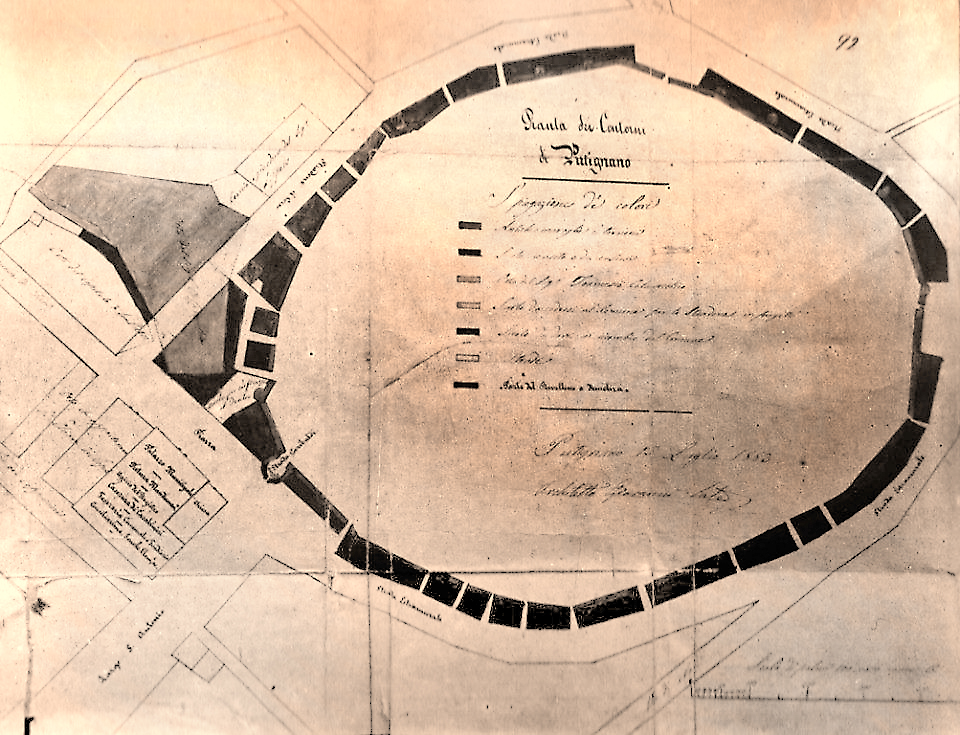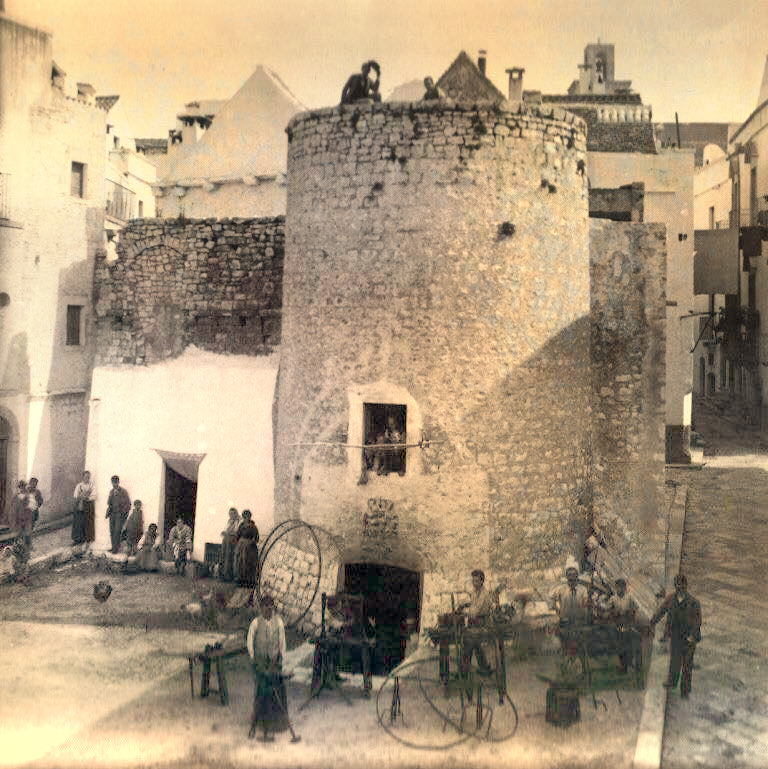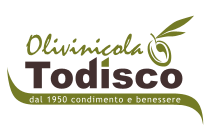Putignano - Tourism, history, food and wine, art and culture.
 In Putignano the Savoy monarchy was very popular. After 1860 there was a clear break with the past: the old pro-Bourbon ruling class had been set aside and the new leaders, frequent visitors to the Circolo dei Galantuomini, who had taken their place, to the Savoys and the Risorgimento ( or to the happy annexation of the Two Sicilies) they had voted: the ancient Piazza, which had never been dedicated to anyone because everyone was alone and simply "minz a chiazz", had become, immediately after the enterprise of the Thousand, Piazza del Plebiscito which had also been held here with the same plebiscite results (2792 SI and no NO) of the rest of the South!
In Putignano the Savoy monarchy was very popular. After 1860 there was a clear break with the past: the old pro-Bourbon ruling class had been set aside and the new leaders, frequent visitors to the Circolo dei Galantuomini, who had taken their place, to the Savoys and the Risorgimento ( or to the happy annexation of the Two Sicilies) they had voted: the ancient Piazza, which had never been dedicated to anyone because everyone was alone and simply "minz a chiazz", had become, immediately after the enterprise of the Thousand, Piazza del Plebiscito which had also been held here with the same plebiscite results (2792 SI and no NO) of the rest of the South!The ancient Corsea was dedicated to Vittorio Emanuele II, the main street of the ancient center that starting from the square reached the road that allowed to go out of Porta Barsento. While the other important road that led from the Piazza to Porta Grande was named after Garibaldi. Then, even before the deadly attack of 29 July 1900, the Stradone, the main street of the new part of the town, had been named after Umberto I and his wife Margherita di Savoia had been given the other important road that cut through the Corso to right angle, real thistle and decumanus of the new era! And in 1904, at the newborn Prince of Piedmont, the Piazza at the tip of Corso Umberto I.
To outline other characters and events of the Risorgimento other roads had been named: and therefore we had a via Cavour, via Bixio, via Cairoli, via Mazzini, via Magenta, via S. Martino and also via Custoza and via Goito. Orsini and Savonarola had also been involved in the operation, I do not know if by the way, given that the anarchist Orsini was known for the attempted regicide of Napoleon III who saved himself thanks to the iron breastplate he always carried on then sent him to the guillotine, while the Dominican friar Girolamo Savonarola, even though he was burned at the stake in Florence at the end of the 1400s, had been not only an announcer of grave misfortunes to induce repentance, a faithful supporter of the theocracy!
Finally, a special seal of total adherence to the Risorgimento values was the entitlement to the main square of the new part of the country to the XX Settembre (that is, at the end of the Papal State and the Pope's temporal power).
The most brazen to turn in favor of the Savoy monarchy in 1860, however, just finished the enterprise of the Thousand, he had been the owner of a house overlooking the main street of Via Santa Chiara but with entrance from the alley next to it!
In his handwritten memoirs, the lawyer Giovanni Casulli (1832-1911) tells that in the mid-1886s in the reconstruction of the neighboring house, in the Arco del Saponaro or Mongelli, the Swabian Eagle was removed which was there and was deposited by Mr Antonio Karusio in his museum in the homonymous villa in Via Cappuccini.
This arch of the Saponaro was probably at the beginning of Via Palmento and was the ancient gate of the primitive Castrum Potineani. With a good approximation you can see in the first plaque in the upper right corner the shape of the Eagle, even if the old photo is not very specific.
The presence of this Swabian eagle near the ancient city gate would confirm, if it were still necessary, the relations between the ancient Putignano and Frederick II of Swabia.
The city began to expand its surface only after the construction of the new city walls wanted by the Balì Giovanni Battista Carafa in 1472.
The ancient walls that occupied what are today the Estramurali, were built in 1475 testified by their own inscription on Porta Barsento and were demolished in 1876, in fact today there are only 2 of the three access gates to the ancient village and a tower adjacent to Porta Barsento. Porta Nuova had a brief function: just over forty years.

The ancient walled fortress that connected Porta Grande and Porta Barsento had about twenty towers, some round and others square, it was built by Balì Giovanni Battista Carafa starting from 1472 and the last in 1475, subsequently the openings listed in the ancient narrow passage, vico 1st and 2nd S. Lucia, vico 1st, 2nd and 3rd Santa Chiara, via Fornello, via and vico Bruni, via S. Maria, via Terzi, vico 1st, 2nd Purgatory, etc.
After this period, the municipality sold to various private lands adjacent to where the walls were located and the latter built, during the remaining years of the 1800s, new buildings practically resting on separate walls. The ancient moat that surrounded the walls was filled, thus obtaining the new wide road that was called a removal; the walls enclosed in the attached photo are visible to the project, dated 1882, which was followed in the construction of the new extra-moenia buildings and in the new removal! (See document of cessation of walls and towers - February 3, 1862)
 It was the architect Giovanni Tateo, the designer of the expansion of Putignano outside the walls. it takes its name from the short road that connects Largo S. Lucia to Corso Umberto I.
It was the architect Giovanni Tateo, the designer of the expansion of Putignano outside the walls. it takes its name from the short road that connects Largo S. Lucia to Corso Umberto I.In essence he designed the two wide streets, the Stradone, later called Corso Umberto I and the wide street that he crossed at right angles, then called via Margherita di Savoia. Putignano had exceeded 10,000 inhabitants and the historical reasons that required a city surrounded by walls were obsolete; and the rich bourgeoisie of the time, the lords, aspired to build new spacious and modern buildings, just as they had already succeeded at an intralpine rhythm like Colavecchio, De Miccolis, Romanazzi-Carducci and a few others!
The angular building of the intersection constituted half of the Chiarolla family and half of the Daresta family was subsequently built as part of the present project.
Between Chiarolla-Daresta and Palazzo Grande, all the space on which the Municipal Theater was built was reserved, slightly larger than this project and also including one of the waterways already present in this area.

Very little historical documentation is available, almost no photos available. Following this photo which dates back to 1898 and which we still see intact a tower and a corner of the ancient walls between Via Osteria and Via Rosata Romanazzi! The only remains of the ancient walls are visible in Porta Barsento where it is also possible to see the last tower remaining in Porta Nuova and off the coast of Santa Lucia. Another tower has survived the Municipal Theater and the fences behind it and can be accessed from a cellar in Vico I Santa Lucia.
Maria Alasia Romanazzi Carducci, only daughter of the Prince Guglielmo, was born in Naple the 14th-12-1904 and married in Naples the 14th-7-1932 Don Mariano Lombardo, Duke of Cumia. Wedding witness was the Prince Umberto of Savoia, brotherly friend of theDuke!
The couple had three sons:
Marina who married Alberto Arditi of Castelvetere, owner of extensive olive groves in the Capo of Lecce area, Gian Andrea who married Marinella Rodinò of Miglione, daughter of Marcello Rodinò di Miglione CEO of Rai and founder of Telespazio and grandson of Giulio Rodinò of Miglione, one of the founders of the Popular Party with Don Sturzo
Margherita who married the pediatrician Mauro Bartorelli and who now lives in Putignano on the Monterosso estate!
Maria Alasia who died in July 1980 and rests in Putignano in the family chapel
 This website project born from the idea of Gianni Musaio is enclosed in a team spirit and is the result of the collaboration of people, ordinary citizens, who care about the historical, cultural, artistic, geographical, food and wine heritage of the historic center of Putignano, a town in to live.
This website project born from the idea of Gianni Musaio is enclosed in a team spirit and is the result of the collaboration of people, ordinary citizens, who care about the historical, cultural, artistic, geographical, food and wine heritage of the historic center of Putignano, a town in to live.

The historic center of a town is the fulcrum of the territory, where ancient stories, traditions and culture of those who preceded us are preserved. You too can contribute to leaving the testimonies of the past to the generations to come, taking care of them.


















